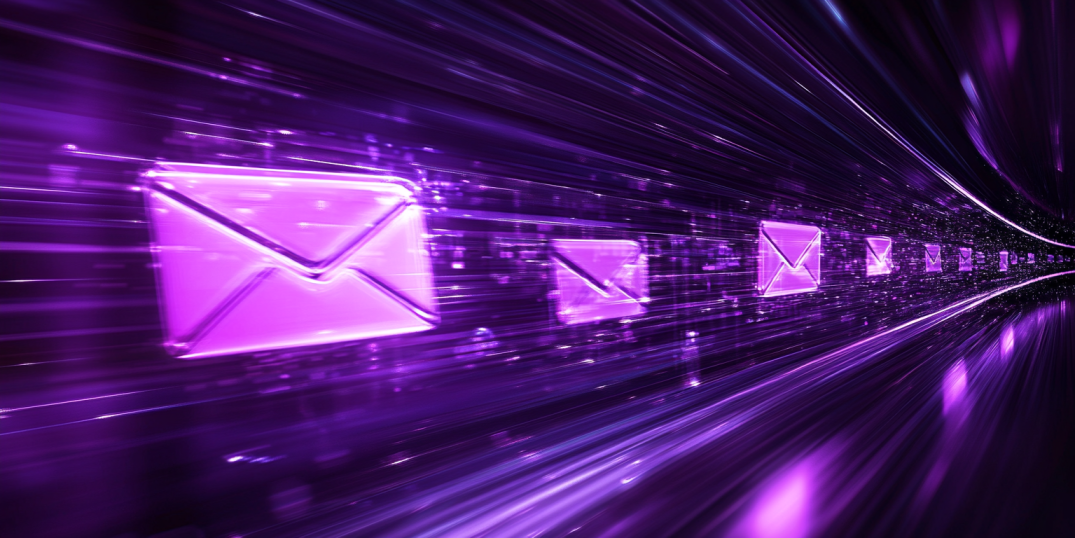- Home
- Email Tips and Tricks
- What Is an Email Blast and How ...

Email blasting carries a double meaning: it allows you to quickly break into multiple inboxes, but that comes with consequences. The first part is definitely good. The issue, though, lies in the method—it can feel a bit too disruptive by contemporary standards.
Today, users appreciate subtlety, even in how they receive emails. We now have marketplaces, everything is available online, and you can get anything delivered in a matter of hours, so something that feels personal and exclusive feels very valuable. And that’s the part where email blasting tends to go in the opposite direction.
Still, this approach does have its own advantages. It’s fast, scalable, and loud—in the right context, maybe even effective. But—and here comes the sad news for lovers of acting fast and loud—this strategy alone likely won’t take you very far today. In this article we’ll talk about e-blast meaning and whether it still has a place in the age of personalization.
What Is an Email Blast?
Before we dive into how to send an email blast or what makes a good one, we need to understand the basics. In other words, we need to get clear on what exactly we can—and should—consider as an email blast.
The term email blast sounds a little intrusive, maybe even aggressive. It gives the impression of a one-to-many message hurled into thousands of inboxes without much warning. And honestly, that feeling isn’t entirely wrong. At its core, an email blast is exactly that: one message sent to a large group of recipients, usually all at the same time, with identical content. You might also hear the term e-blast, which is just a different label for the same thing.
Now, while this approach might seem outdated—or even inappropriate—in today’s email marketing world, where personalization is the gold standard, the truth is a bit more complex. Surprisingly, when done right, email blasts can still be one of the fastest ways to get a message across to hundreds (or even thousands) of people.
If you think this approach lacks strategy, you’re missing the point. It’s not that there’s no strategy—it’s that the strategy is built around the format of a classical broadcast model: uniform content, mass delivery, and minimal segmentation.

Email Blast vs. Mass Email vs. Bulk Email
From time to time, you’ve probably come across each of these terms: email blast, mass email, bulk email. On the surface, they all seem to be the same or a similar thing. That’s a pretty fair assumption, because they do overlap. But depending on the context and what exactly you’re doing, they don’t always mean the same thing.
If we talk about email blasts, these are usually used in the context of marketing campaigns. They’re fast, wide-reaching, and rarely personalized. Scrappy, old-school, and built on a kind of spray-and-pray logic. If you think of one identical message being sent out to a huge list without much segmentation, you get to the core of email blast meaning.
Mass emails, while still going out to large lists, are a little more put together. Think of internal updates, event invites, or newsletters sent to your team or your alumni group. They’re not aggressive and sound more like “Here’s what’s going on.” So even though it’s still one-to-many communication, the tone is a bit calmer and more professional.
Now, bulk emails—this is the term often used by developers, sysadmins, and other tech folks. It’s the one you’ll see in backend dashboards and delivery tools. And it has less to do with content and more to do with volume and infrastructure.

Here’s a quick breakdown:
| Term | Tone | Typical usage | Connotation |
|---|---|---|---|
| Email blast | Informal | Marketing campaigns | Can feel outdated or spammy |
| Mass email | Neutral | Newsletters, internal comms, event invites | Professional but impersonal |
| Bulk email | Technical | Backend delivery systems, transactional | Infrastructure-level, not content-driven |
Which one should you use and when?
👉 If you’re writing something casual and marketing-related, go ahead with an email blast—just know that it carries a bit of a legacy vibe and a touch of spamminess, depending on how it’s used.
👉 If you’re aiming for something a little more neutral, mass email is your choice.
👉 And if you’re deep in the backend or setting up your systems, bulk email is the technical term you want.
But what also unites these terms is that more and more people are moving away from them—and leaning toward phrases like segmented campaigns or personalized messaging. It happens due to changing trends that favor personalization and individuality above all other email attributes. So, if you still choose blasting over personalizing, at least make sure it is only one part of your email marketing strategy.
Pros and Cons of Email Blasts
Advantages of email blasts
✅ Speed and simplicity. When you have offers or announcements that don’t require much segmentation or that fit generalized expectations well enough, email blasts can do the job. Especially if time is tight or you simply don’t want to spend too much effort, the balance between input and output might be just good enough.
Example of an email blast from Grammarly

✅ Massive reach. In some cases—especially for companies with large subscriber lists—email blasts can still outperform more targeted campaigns. Choosing quantity over quality might not always be ideal, but when done quickly and for the right type of content, it can deliver results.
Company news email blast from Maxon

✅ Cost-effective. One message sent to thousands—from a budget standpoint, email blasts are definitely efficient.
Limited-time offer email blast from New York Times

Disadvantages of email blasts
⚠️ Low engagement. When you target the masses, don’t expect personal reactions in return. Engagement will almost always be lower than in campaigns built with personalization in mind.
⚠️ Higher risk of being marked as spam. Because email blasts lack personalization and often feel generic or overly promotional, they’re more likely to trigger spam filters.
⚠️ Missed opportunities. One-size-fits-all might work for the least demanding users, but the ones who expect specific experiences won’t be impressed. Without segmentation, you might catch some fish—but the valuable, high-intent prospects will most likely slip away.
So, if you’re asking how to send an email blast, the real answer is carefully. It’s a format that still exists, but it has to be used wisely. Not as a primary tactic, but as a tool—maybe even a transitional one—until you’re ready to lean into segmented campaigns and more personalized messaging.

Best Practices for Effective Email Blasts
✨ Know when it actually makes sense
In some cases, an email blast is the right approach. When timing and coverage matter more than personalization, this format might just be the right choice. The key here is not to make it your default strategy.
✨ Still refine your audience
A common mistake with email blasts is sending to your entire list at once. But even here, you don’t have to go all in. You can still break your list into smaller interest groups or geographic segments and slightly adjust your message.
✨ Design for speed and clarity
Most people receiving your e-blast didn’t ask for it, which means your job is to make it fast to process. Skip long intros and use bold headers, as your readers will decide quickly whether this is worth their time.
✨ Choose the right time and frequency
If you’re not personalizing content, at least try personalizing the timing. Look at past campaign data or industry benchmarks. And don’t overdo it. Too many plus too often is not a good combination in this case.
Alternatives to Email Blasts
While you don’t have to drop email blasts altogether, you definitely should start shifting them from your main strategy to something more supplementary. Slowly increase the presence of other formats in your email marketing portfolio, because contemporary trends require an approach that email blasts alone simply can’t satisfy anymore. Let’s look at some alternative strategies that can help you redirect your focus to something more in tune with current expectations.
👉 Drip campaigns
Drip campaigns are a series of automatic emails sent based on a specific user action or timeline. Instead of bombarding people blindly, you welcome them when they sign up and you follow up when they click a link. This purposeful progression helps build trust and connection and avoid overwhelming users.
👉 Triggered emails
Triggered emails respond to something the user did—or didn’t do. This method is reactive in the best way—it meets users where they are, not where you hope they’d be. Triggered emails deliver the right message to the right person at the right time.
👉 Personalized journeys
Personalized journeys are experiences tailored to reflect who your user is, what they want, and what they’ve already shown interest in. It’s the essence of modern email marketing that provides relevance, timing, and respect for the user’s attention.
👉 Push notifications and SMS
Sometimes email isn’t the fastest route, or not the only one you should use. Push notifications and SMS messages offer more immediacy. They’re ideal for short updates, time-sensitive offers, or quick reminders. Together with email, they help create a communication mix that feels complete.
To Sum Up
When talking about email blasts, it makes sense to consider them in the context of contemporary email marketing, and contemporary email marketing is guided by personalization. So, in a way, what is an e-blast if not a remnant of an older era? But that doesn’t mean it has become completely obsolete. It still has its place—not as a main strategy, but maybe in specific cases or as a supplementary part of your overall marketing mix. And knowing how to do an email blast the right way can still bring positive results in certain cases.



